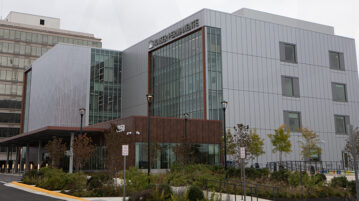In treating diabetes, seconds count: Every 7 seconds someone dies from the disease, according to the International Diabetes Federation. A major contributing factor to this high mortality rate are limb loss through amputation which is often preceded by a foot ulcer. An estimated 25 percent of people with diabetes will develop a foot ulcer during their lifetime, according to a recent study.
As the population of adults with diabetes (over 60,000 in 2017) and peripheral artery disease patients in the Mid-Atlantic States region continues to grow, MAPMG leaders convened a Limb Preservation Summit earlier this year at Regional Office in Rockville, Maryland. The summit brought together physician and health plan leaders from Primary Care, Endocrinology, Podiatry, Vascular Surgery, Infectious Disease, Physical Medicine and Rehabilitation, Skilled Nursing Facilities, and Wound Care to discuss care improvements in the effort to prevent limb amputations related to diabetes and peripheral vascular disease. All agreed to work together to develop a multidisciplinary approach for the care and management of these high risk patients to reduce their risk of amputation, and include a goal of standardization of practice and metric development.
“Everyone agrees that a multi-disciplinary and coordinated approach is the right thing to do” says MAPMG’s Physician Director for Population Care Management Rebecca Fitch, MD. “In having a collaborative approach, physicians have an opportunity to assess and develop a care plan when the patient is seen on day one. This model can help cut back on delays in care and improve patient satisfaction. “The multidisciplinary diabetes foot care clinic approach was recognized as a Clinical Practice Guideline by the Infectious Disease Society of America in 2012.
MAPMG Podiatric Surgeon Adam Isaac, DPM, who leads the podiatry foot wound clinic for high-risk people with diabetes in Kensington and Largo Medical Centers, said programs and health systems that have adopted a multi-disciplinary approach to limb preservation are reporting the best results.
“The patients I see are at the highest risk for developing lower extremity complications of diabetes, such as ulceration and amputation. It’s a huge problem, and the effects are certainly felt across many other specialties,” he said. “An amputation can have devastating effects on quality of life for our patients. Not only can an amputation affect mobility and function, but it can also lead to issues of self-esteem and mental health. Furthermore, amputations can result in significant lost wages from time off of work, which can obviously impact family life.”
Amputations and Wound Care are resource intensive problems with a heavy cost burden. The concept of a multidiscplinary limb preservation clinic is one area where MAPMG can provide better care and have possible future dollar savings in the hundreds of millions. According to a recent study, patients with foot ulcers from diabetes are twice as costly to US Medicare as those with diabetes alone.
Preventive care, such as maintaining blood sugar control and regular foot inspection helps patients avoid painful, dangerous foot ulcers. The Diabetes Federation estimates 85 percent of amputations may be prevented by early detection and appropriate treatment.
There is more to come and hard work ahead to establish such a program. Any progress we make can only benefit our patients.




